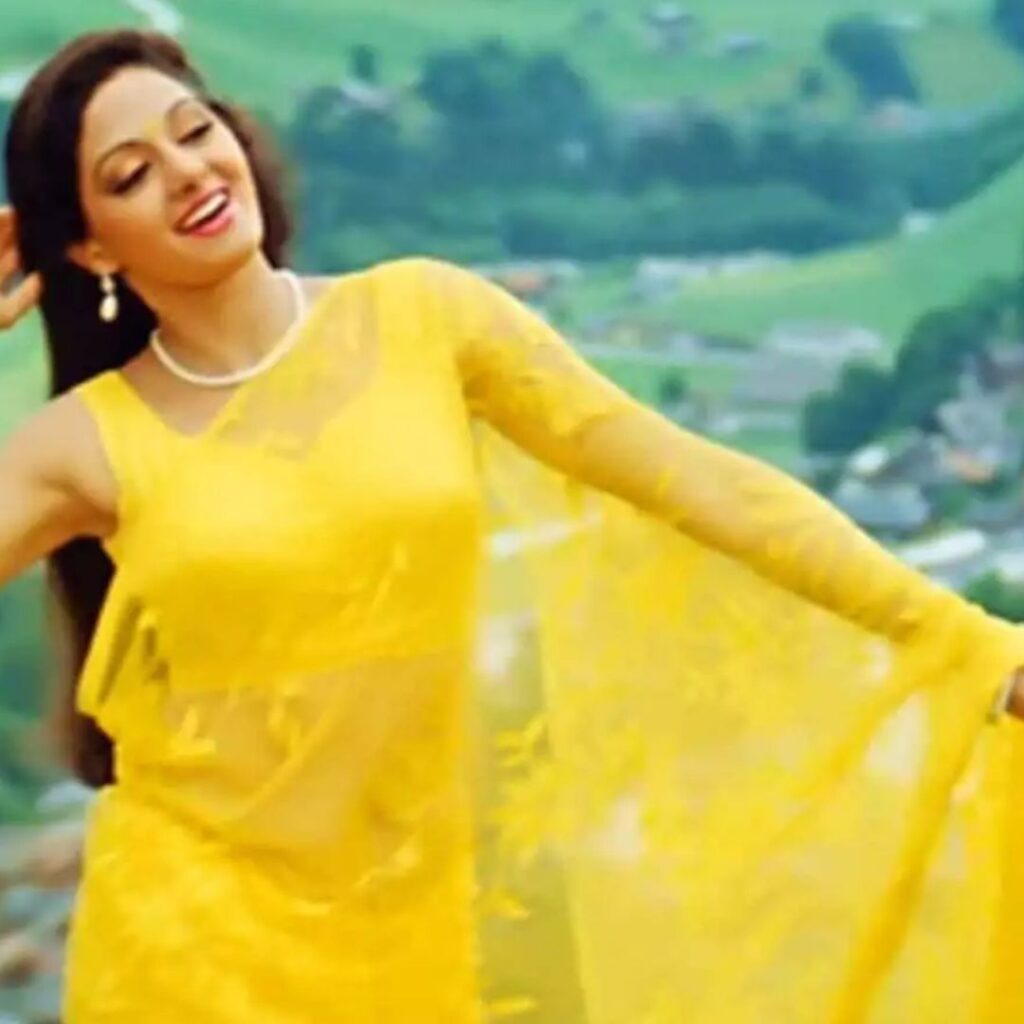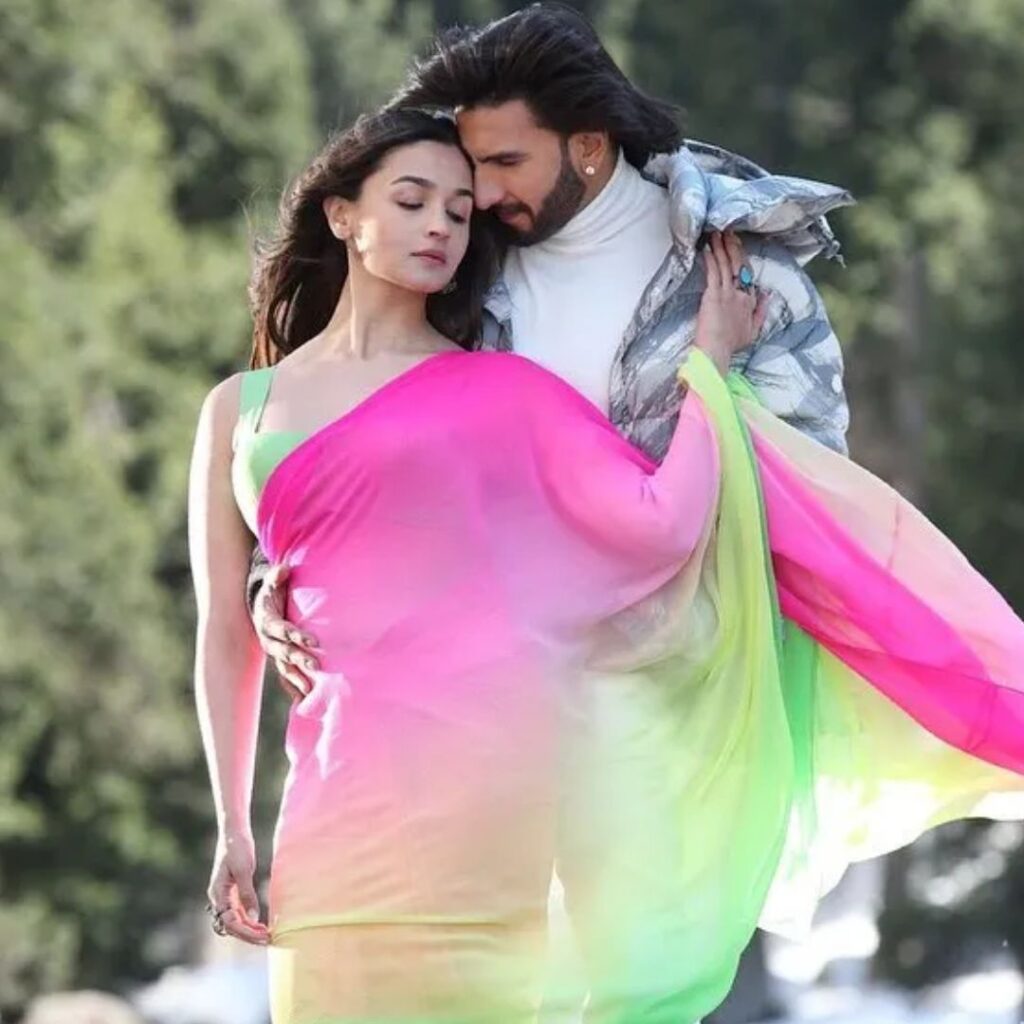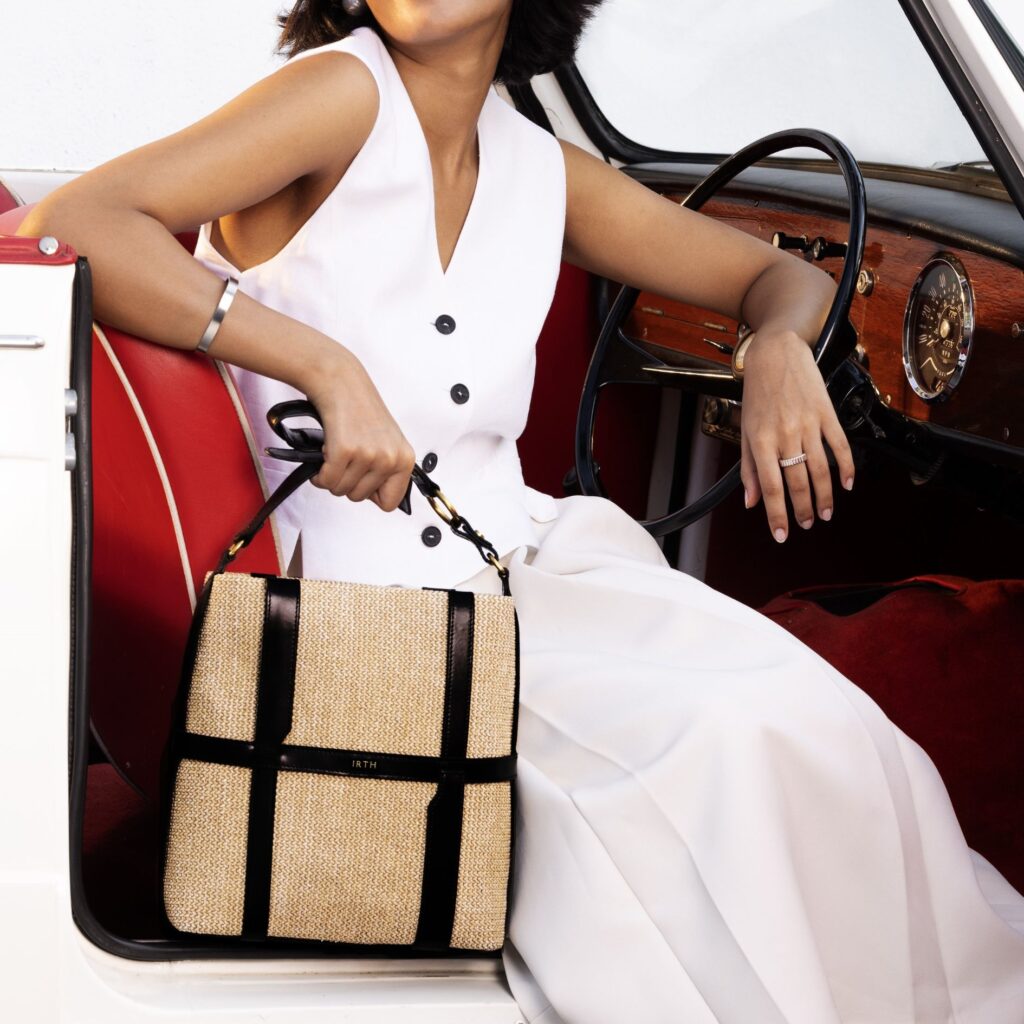The Word. explores how this niche textile became a symbol of liberation for the modern Indian woman.
- Fashion
A Brief History of the Chiffon Sari
- By Team The Word.

Maharani Indira Devi of Cooch Behar
By Maahi Shah
The moment someone mentions chiffon sari, images of iconic Bollywood actresses like Sridevi, Kajol, and, more recently, Alia Bhatt flash in front of our eyes. But the undeniable presence of this fabric in Bollywood goes beyond its romantic glory. India’s love affair with chiffon began in the late 1800s, and almost 150 years later, the fabric still holds a special place in our hearts, representing the ideals of the modern Indian woman, striving to break free from age-old conventions.
A Royal Affair
The word ‘chiffon’ comes from the French word chiffe, which means cloth or rag. Produced in France’s textile capital Lyon, chiffon was created exclusively with silk back then. But how this fabric journeyed to India is a fascinating tale. Maharani Indira Devi of Cooch Behar can be credited for bringing the light, flowy French fabric to India. She discovered chiffon during one of her trips to Lyon, France, and fell in love with it. Maharani Indira Devi envisioned chiffon to be the perfect fabric for saris, and placed a custom order for a nine-yard fabric in a loom in Lyon. “She was besotted with the silk chiffon and she wanted to use it to create saris. So, she commissioned textile designer, Monsieur Erigua, to make an appropriate length of fabric, which could be worn as a sari,” says Pritha Dasmahapatra, Indian textile enthusiast, doctor, and dancer. Maharani Indira Devi added intricate borders on her saris to make them look more stylish. And She had also inherited the finest of jewels from the royal families, which were sent to Italian designer Salvatore Ferragamo, to create custom-made shoes for the Queen,” adds Pritha. A silk chiffon sari, paired with striking jewels, and embellished shoes became her signature look.
While Maharani Indira Devi created the chiffon sari, it was her daughter, Maharani Gayatri Devi, who elevated the look decades later. “I don’t think you can talk about chiffon saris and not mention Maharani Gayatri Devi,” says textile researcher, curator, and author Savitha Suri. “Rajput royalty played an important role in popularising chiffon saris in India. Other royal families, too, began wearing chiffon saris, and the aristocracy caught on to the look. Chiffon saris were regularly spotted at soirees and Western dinners, as they effectively bridged the gap between being Indian with modern sensibilities,” Savitha adds.
When the likes of Maharani Gayatri Devi of Jaipur, Sita Devi of Baroda or other members of the Indian royalty such as the Scindias or Holkars of Madhya Pradesh, wore these styles, their patronage saw a top-down effect with others wanting to cop the look. Silk Chiffon remained scarcely available in the country, with most of the fabric being brought in from France and limited to the Indian royalty, who wanted only French weavers to make those saris. The only two stores at the time, Sari France Ltd and Saree & Co would regularly ship the ensemble to India. In fact, when Maharani Sita Devi of Baroda passed away in 1989, Saree & Co. shut shop as a mark of respect to her. She left behind more than a thousand saris with matching bags and shoes.

The Democratisation of the Chiffon Sari and the Ideals It Represented
So how did chiffon make its way into mainstream fashion in India? “What the royalty does, the aristocracy will imitate,” explains Savitha. “Maharani Gayatri Devi, known as the people’s princess, broke many stereotypes—that instilled a sense of empowerment in the average Indian woman,” she adds. By 1958, affordable versions of chiffon, created with polyester and nylon came into being, which made the accessible to the masses. “At the time, India witnessed a surge in the number of working women—doctors, teachers, bankers, among others—who wanted to wear saris that were affordable and low maintenance, and still appeared elegant and modern. Unlike traditional fabrics like cotton and silk, the lightweight, modern chiffon saris helped Indian women break out of a traditional mould—the chiffon sari quickly became a symbol of progressive Indian woman,” adds Savitha.

Bollywood’s Tryst with Chiffon Saris
With these values in mind, the chiffon sari made its way into the Hindi film industry around the 1970s and 1980s. Think Rekha in Silsila (1981) or Shabana Azmi in Masoom (1983). “They represented the educated Indian housewife,” says Pritha. But it was late director-producer Yash Chopra and designer Neeta Lulla’s vision for Sridevi’s iconic character in Chandni (1989) that put the chiffon sari on the map. “We used the soft-silk weaves from Bengaluru—Yashji [Chopra] wanted to use just plain chiffon saris creating cutting-edge designs, which were not worn earlier. He loved how chiffon enhanced the look and added to romance and drama,” shares Neeta Lulla. And the legacy created by Yash Chopra was carried forward by designer Manish Malhotra, whose career as a costume designer in Bollywood is punctuated with a series of iconic, memorable fashion looks. “It’s truly remarkable how chiffon saris have left an indelible mark on the world of Indian cinema as filmmakers sought to portray their heroines in a light of elegance, sensuality, and modernity. The trend, started by Yash Chopra, continued when I designed its modern interpretations for talents like Kajol, Karisma Kapoor, and Aishwarya Rai Bachchan,” says Manish. Well, we blame him for our incessant, dreamy desire to be draped in a multi-hued chiffon sari. “Having worked closely with Karan Johar, I had the thrill of witnessing how his scripts beautifully conveyed various emotions and eras. Kajol’s iconic appearances in Kabhi Khushi Kabhie Gham (2001) and Kuch Kuch Hota Hai (1998), exemplified the romantic era of the chiffon sari. On the other hand, Alia Bhatt’s role in Rocky Aur Rani Ki Prem Kahani (2023) represents the empowerment era, where the chiffon saree is worn with a sense of confidence and independence. My creative process with this sari starts with envisioning the emotion I want the wearer to feel. Is it power? Sensuality? Innocence? Depending on that, I choose colours, motifs, and details,” adds Manish.
Did the chiffon sari ever go out of style? Not really. The fabric, now as Indian as it is French, has transcended time, evolving through the social, economic and cultural conditions of society. It makes a powerful comeback each time it goes underground, with renewed meaning, symbolism and perspective.

READ MORE
- The Word. and Bumble Celebrated An Evening Of Scent, Sparks, and Mutual Connections
- How The Bicester Collection Quietly Became the Fashion Insider’s Best-Kept Shopping Secret
- Gauri Khan, On Her New Experience Centre In Delhi, Her Favourite Spot At Home, and Great Décor Advice
- With IRTH’s New Store in Noida, The Brands Adds To Its Joyful Delights
- Ranbir Kapoor’s New Perfume, ARKS Day, Reminds Him of His Childhood





